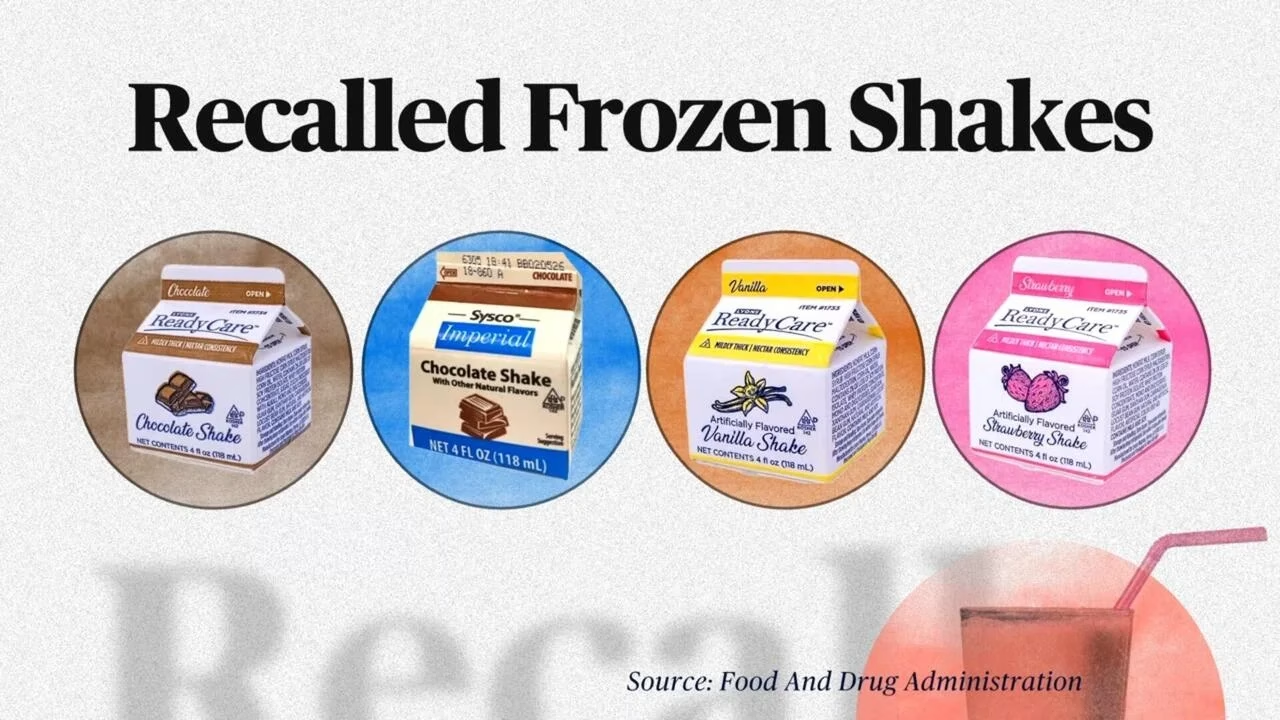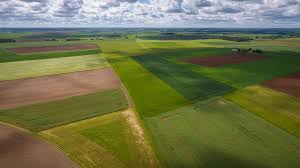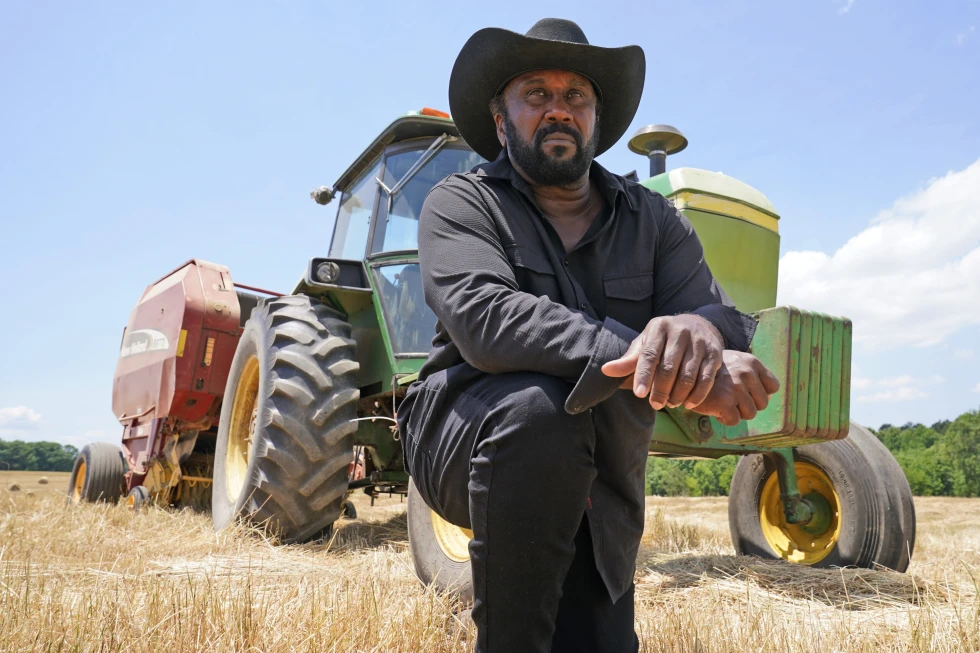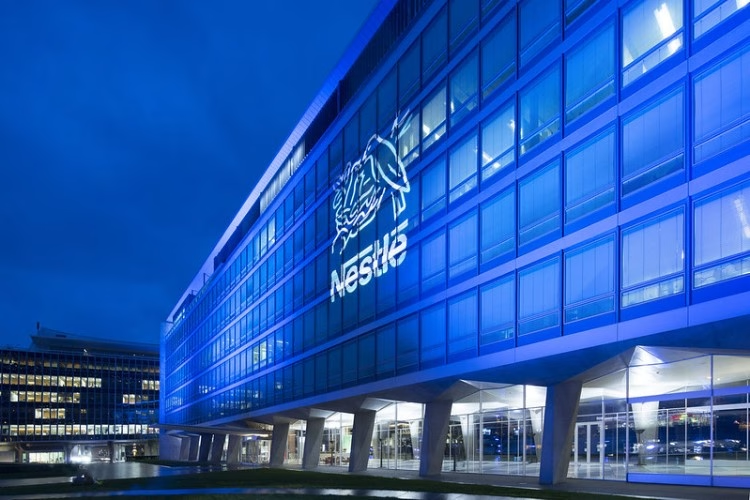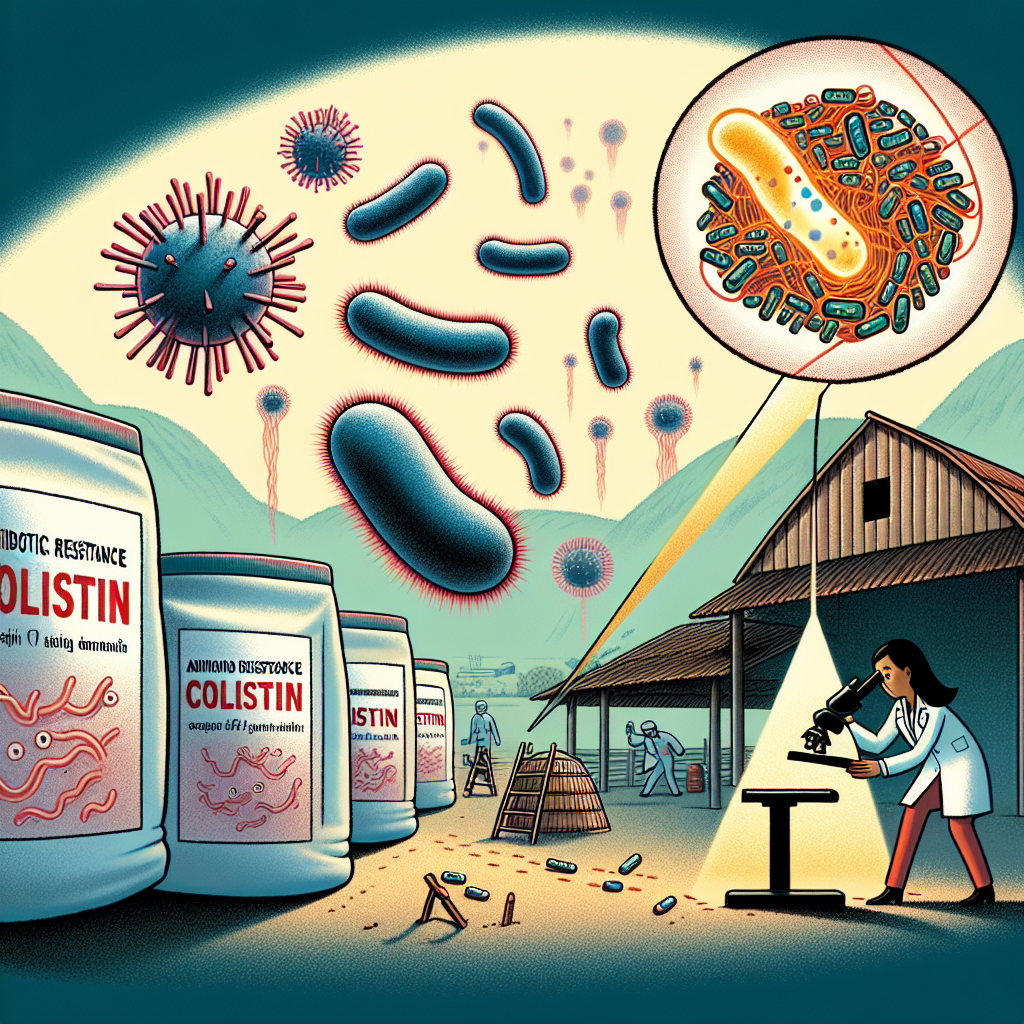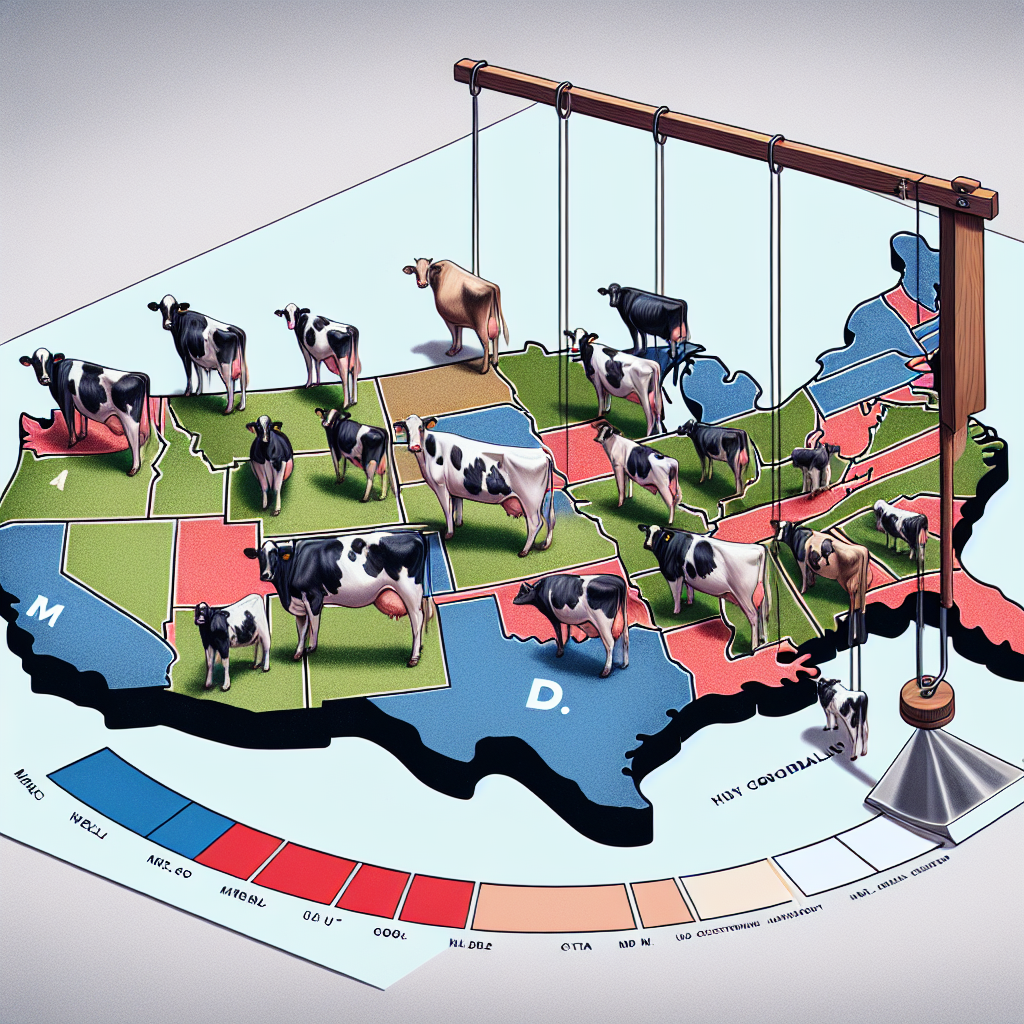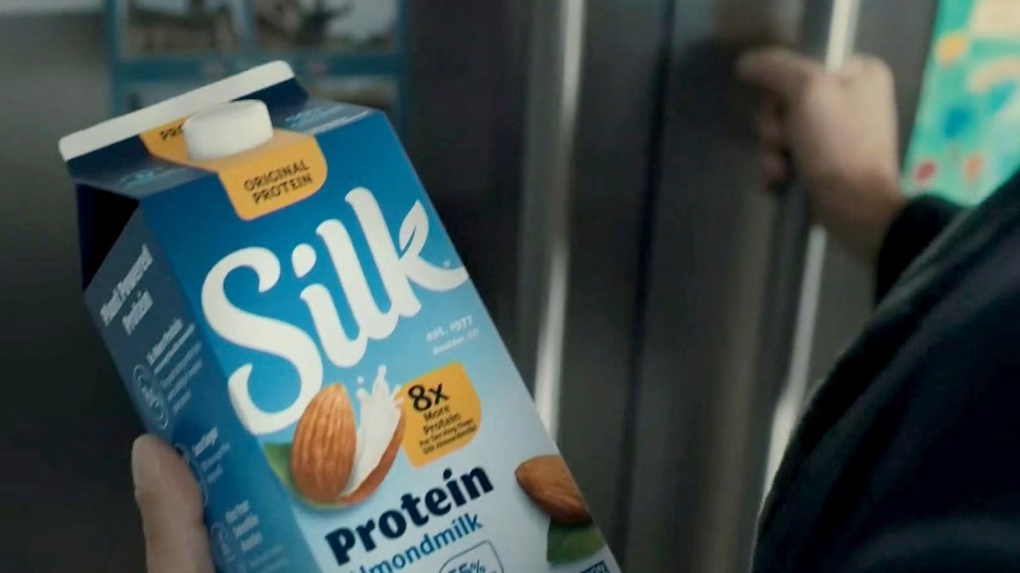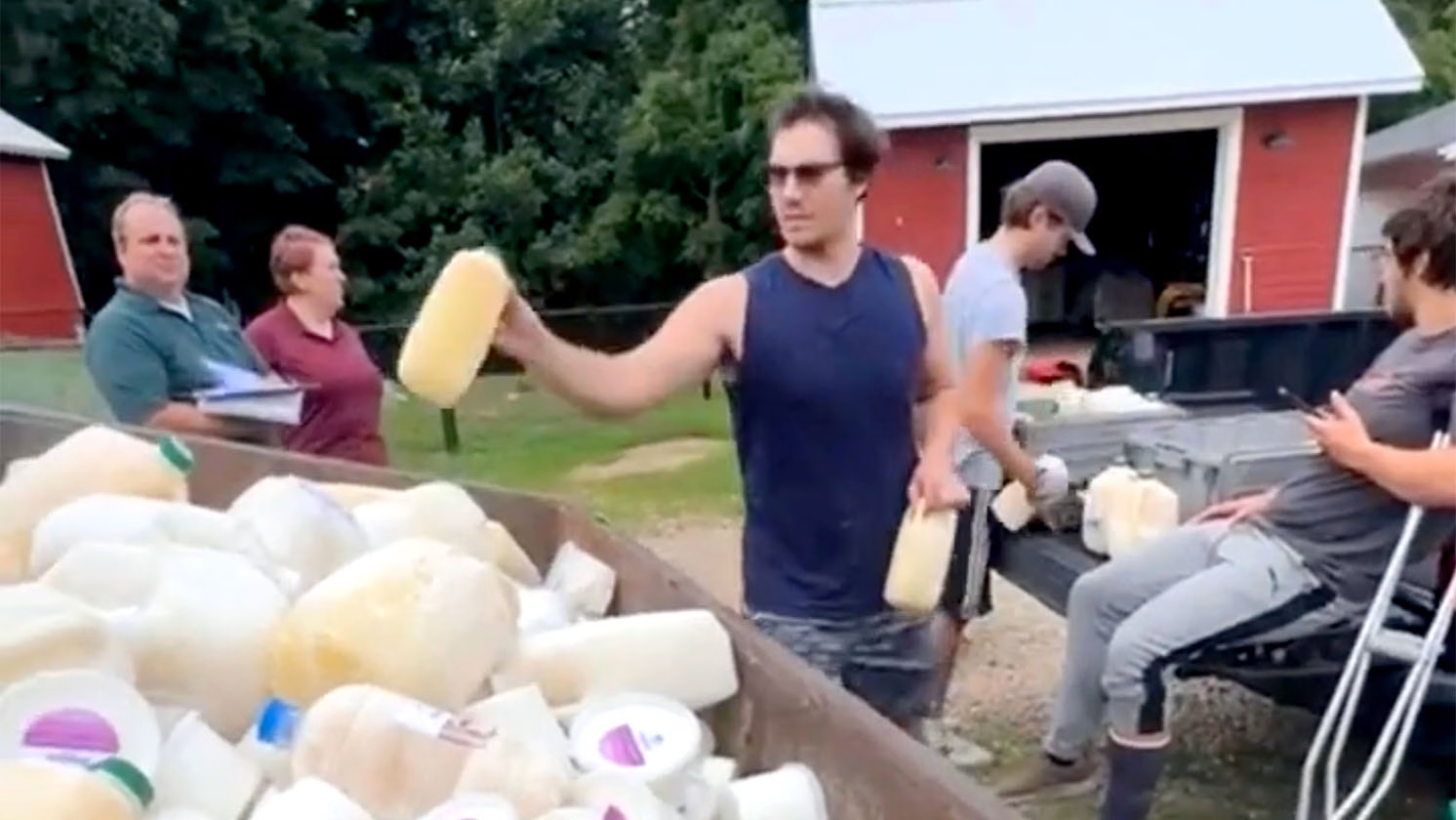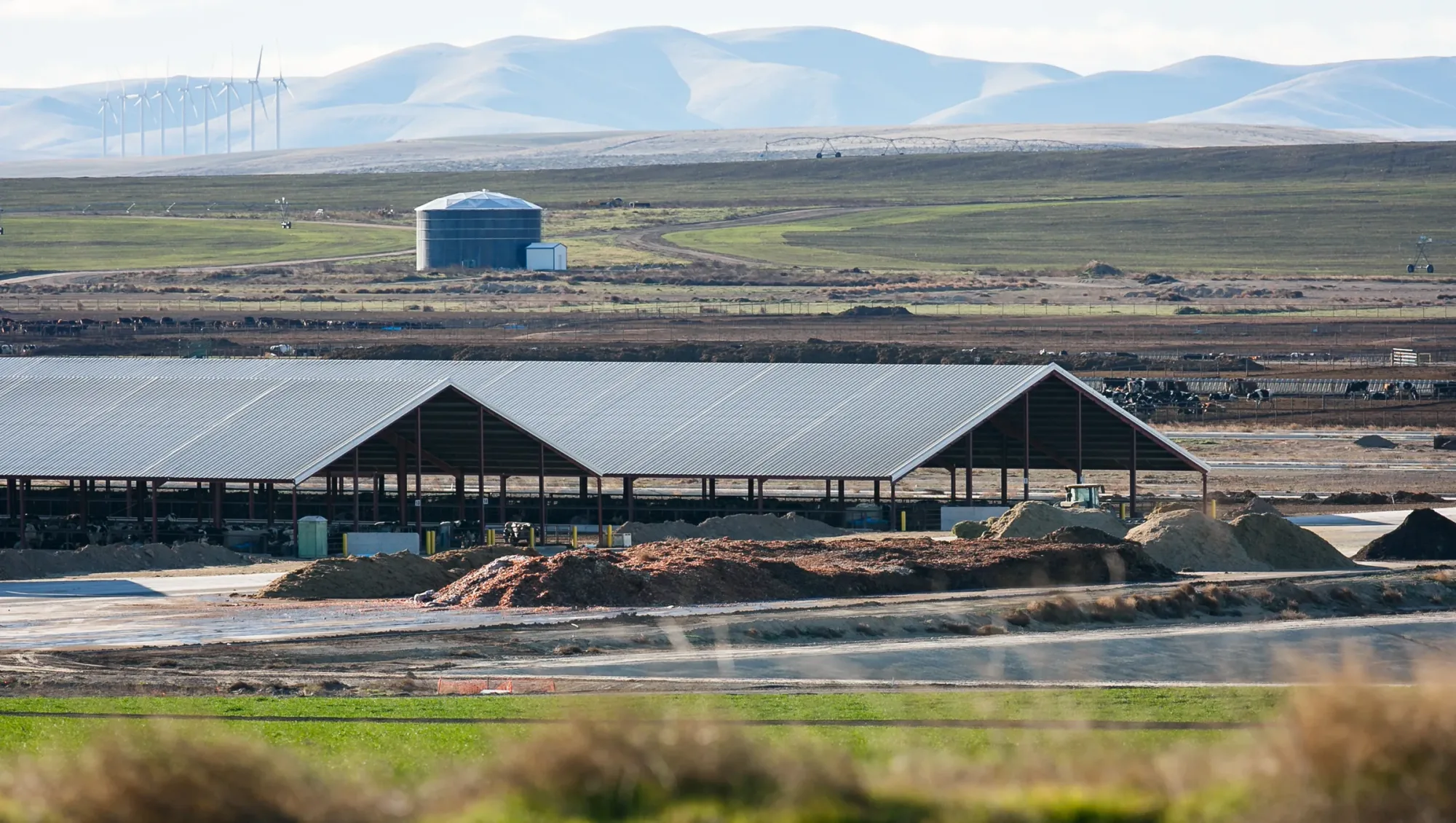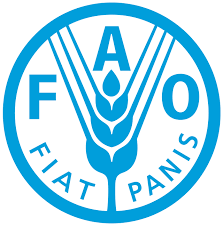Egg prices hit $15/carton as states reverse cage-free laws. Could dairy housing mandates be next? The high-stakes clash of ethics vs economics.
EXECUTIVE SUMMARY: Amid record egg prices and avian flu outbreaks, Nevada, Arizona, and Michigan are rolling back cage-free poultry mandates despite animal welfare concerns. The article reveals how 11% higher mortality rates in poorly managed cage-free systems challenge simple welfare narratives, while Canada’s impending tie-stall ban shows dairy faces parallel $8k+/cow conversion costs. With the EU accelerating cage-free adoption as U.S. states retreat, producers face global market dilemmas requiring strategic risk assessment tools like the included regulatory cost calculator.
KEY TAKEAWAYS:
- Regulatory Whiplash: 5 states delaying/reversing cage-free laws amid 41% projected egg price hikes
- Welfare Complexity: Cage-free systems show 11% higher mortality without proper management (Poultry Science 2023)
- Dairy Parallels: Canada’s 2027 tie-stall restrictions mirror $1.2M farm conversion costs seen in Wisconsin case studies
- Global Divide: U.S. retreat clashes with EU/Norway mandates, creating export compliance challenges
- Actionable Tool: Interactive calculator helps producers assess retrofit costs vs price thresholds

The American breakfast table has become ground zero for consumer sticker shock, with egg prices reaching unprecedented levels nationwide. In early March 2025, egg prices hit an all-time high of $8.17 per dozen before dropping sharply to $4.90 within a week—one of the steepest declines in recent memory. This price volatility has sparked intense debate about underlying causes, with industry advocates pointing directly at cage-free housing mandates as a significant contributor.
As states grapple with these economic realities, a dramatic shift is occurring across the United States, with several jurisdictions moving to roll back recently enacted animal housing regulations. This reversal comes amid skyrocketing egg prices and supply shortages that have left grocery store shelves marked with caution tape and purchase limits of just two cartons per person.
The Regulatory Whiplash

The legislative landscape for egg production is experiencing unprecedented turbulence as states reconsider their cage-free commitments:
Nevada Takes Immediate Action Nevada has taken the most decisive action, with Governor Joe Lombardo signing legislation on February 13, 2025, allowing for temporary suspension of cage-free regulations during emergencies. This law enabled the state’s Department of Agriculture to issue a 120-day suspension beginning February 20, permitting eggs from any producer meeting basic food safety guidelines to enter the market regardless of housing systems.
Arizona Delays Implementation In Arizona, cage-free requirements were initially scheduled to take effect in 2025 but have now been delayed until 2026, with legislation seeking to repeal the requirements altogether. This represents a significant reversal from the state’s previous position.
Michigan Considers Rollbacks Michigan, which enacted cage-free legislation in the fall of 2021, is now considering similar legislation to roll back these requirements. This is particularly notable as Michigan was cited as a model for proactive cage-free legislation that Utah followed in 2021.
Colorado Stands Firm Despite the trend toward regulatory retreat, Colorado’s bill to repeal cage-free requirements failed. The state remains committed to its January 1, 2025 deadline, when all eggs sold in Colorado must come from cage-free facilities.
Utah’s Commitment in Question Utah, which pledged in 2021 to be cage-free by 2025, now faces uncertainty about whether it will maintain this commitment given the current market conditions. The state’s legislation was explicitly designed to prevent ballot initiatives from animal rights groups, with the Humane Society of the United States (now Humane World for Animals) committing in writing never to seek additional egg-laying hen confinement legislation if the bill passed.
The Economics vs. Welfare Debate
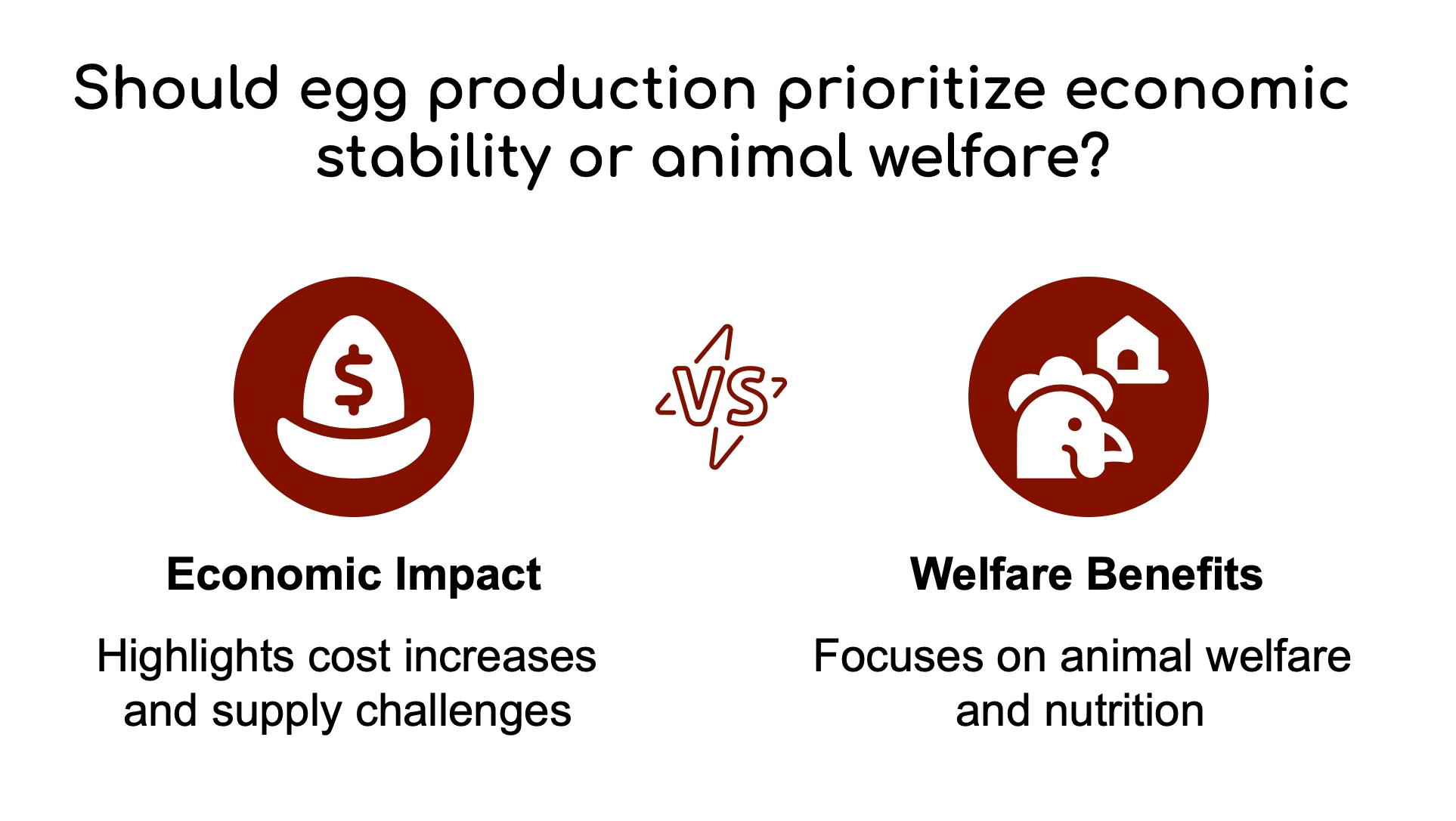
The debate over cage-free housing requirements has crystallized into two competing narratives about their economic impact and welfare benefits.
The Economic Reality
Industry representatives argue that mandated housing transitions dramatically increase production costs. In California, consumers have faced prices exceeding $15 for an 18-pack of extra-large eggs, with purchase limits and empty shelves becoming increasingly common. These eye-watering prices have sparked intense debate about their underlying causes.
The ongoing Highly Pathogenic Avian Influenza (HPAI) outbreak has devastated flocks nationwide, creating a perfect storm when combined with regulatory requirements for cage-free housing systems. The USDA recently updated its food price forecast, predicting a 41.1% increase in egg prices by the end of 2025 due to ongoing volatility stemming from the bird flu outbreak—a significant jump from the 20.3% increase anticipated in January.
The impact extends beyond retail prices to the restaurant industry. Denny’s confirmed in February that some locations would temporarily implement a surcharge on egg-inclusive dishes due to the supply crunch and rising egg prices nationwide. Meanwhile, Trader Joe’s began limiting purchases nationwide to one dozen eggs per customer daily to ensure broader access.
The Welfare Question
Challenging the Cage-Free Consensus
Recent scientific research challenges the assumption that cage-free systems inherently improve hen welfare. A 2025 Journal of Animal Science study examined the liver transcriptome of hens housed in conventional cages versus cage-free production systems. The research found 138 differentially expressed genes between the two housing systems, with genes related to fat synthesis more active in caged hens.
However, mortality rates can climb by up to 11% in poorly managed cage-free barns compared to modern enriched colonies, according to a 2023 study in Poultry Science. This underscores the importance of management practices rather than housing type alone in determining animal welfare outcomes.
Nutritional Benefits of Cage-Free Systems
On the other hand, research suggests potential nutritional benefits from cage-free production. A February 2025 study in the Journal of Dairy Science found that eggs from cage-free hens supplemented with microalgae showed higher antioxidant content, particularly under heat-stress conditions. The study demonstrated that microalgae supplementation significantly improved egg production and live weight gain in laying hens, with higher levels of dietary antioxidants correlating with better performance.
Global-Local Tensions
The U.S. regulatory retreat starkly contrasts with international trends, particularly in the European Union, where cage-free mandates continue to advance. This divergence creates strategic challenges for producers selling into multiple markets.
While states like Arizona delay implementation until 2026 or consider full repeal, countries like Germany are moving forward with 2024 cage-free mandates. This regulatory divergence creates complex compliance challenges for international egg producers and exporters.
The Dairy Connection: Why This Matters Beyond Eggs
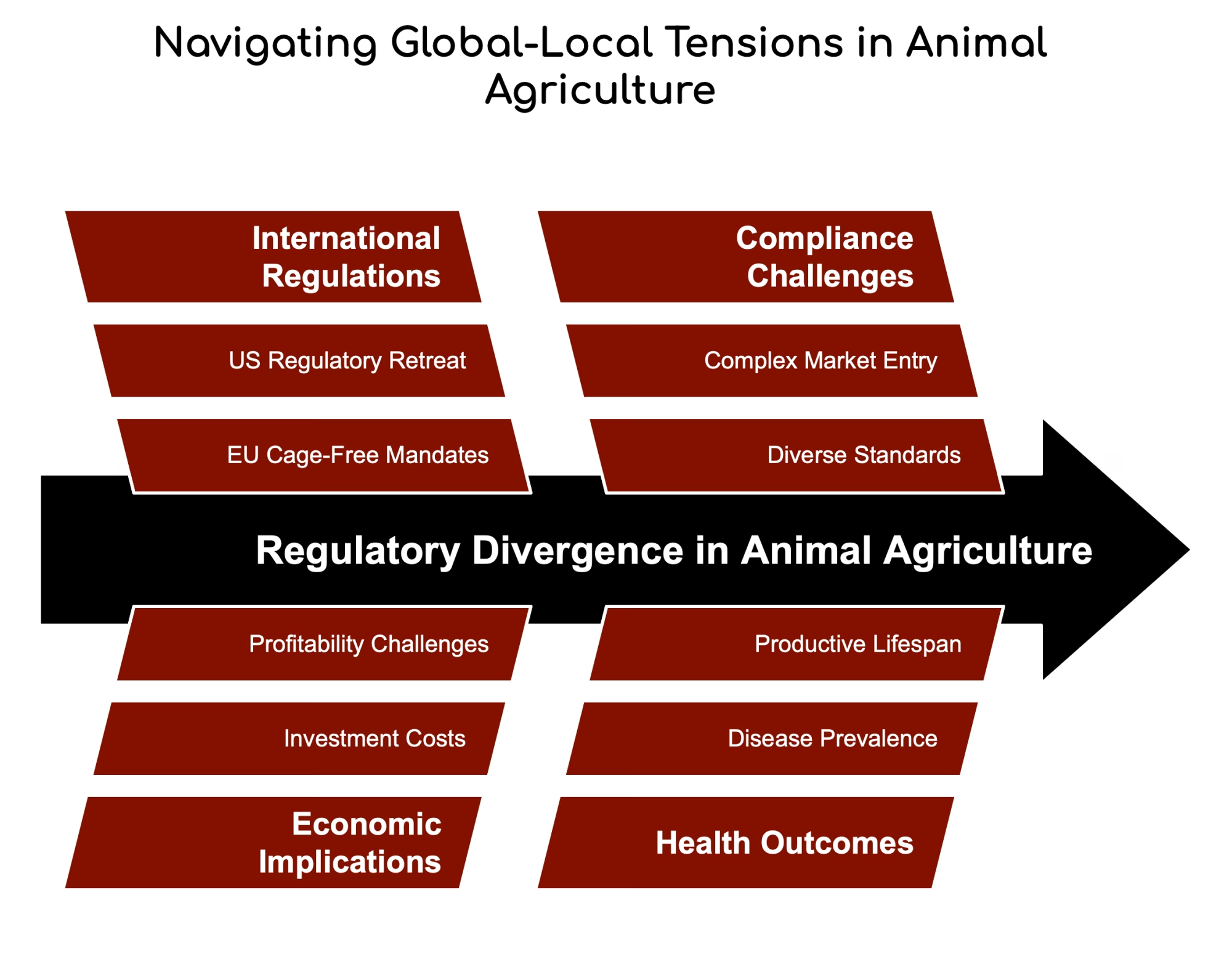
While current regulatory rollbacks focus primarily on egg production, dairy farmers should pay close attention to this evolving situation. The precedent being established could easily extend to other sectors of animal agriculture, including dairy operations that face increasing scrutiny over housing practices.
Tie-Stall Bans: The Norwegian Example
Norway provides a compelling case study of similar housing transitions in the dairy industry. Due to stricter animal welfare regulations, Norway has banned tie-stalls for dairy cows from 2034 onwards. According to a 2022 Agricultural and Food Science study, this transition presents significant economic challenges, particularly for smaller operations.
The research found that “irrespective of herd size, continuing farming with an upgraded tie-stall is more profitable than investing in new loose housing. For farms with less than 30 cows, investment in new loose housing is, on average, not profitable and involves a high risk.” This economic reality mirrors the challenges facing egg producers transitioning to cage-free systems.
Canadian Dairy Code of Practice
Canada is also implementing significant changes to dairy housing requirements. The new Code of Practice for the Care and Handling of Dairy Cattle, which will be incorporated into the proAction program by fall 2025, includes several key requirements:
- Effective April 1, 2027, cows must not be tethered continuously throughout their entire production cycle
- Newly built barns must allow daily, untethered freedom of movement and social interactions year-round
- By April 1, 2029, all cattle must calve in loose-housed maternity pens, yards, or pastures that permit them to turn around.
- Stocking density in barns must not exceed 1.2 cows per stall in free-stall systems, reducing to 1.1 by April 1, 2027, and 1.0 by April 1, 2031
These requirements represent a significant shift in dairy housing practices, with potential economic implications similar to those facing the egg industry.
Health Outcomes Across Housing Systems
A 2022 case study published in the National Center for Biotechnology Information examined the effect of housing systems on disease prevalence and the productive lifespan of dairy herds. The study found that while deep litter systems showed lower overall morbidity and longer productive herd life, tie-stall barns had a reduced prevalence of mastitis but a higher risk of lameness, retained placenta, parturient paresis, and displaced abomasum.
Similarly, a Norwegian study evaluating tie stalls and free stalls noted that milk production was 134 kg lower in free-stall facilities compared to tie stalls. However, there was no difference in mastitis between the two facility types. These findings highlight the complex trade-offs between housing systems, challenging simplistic narratives about which approach is “better” for animal welfare.
Case Study: Dairy Farm Transition Costs
The Johansen Family Dairy in Wisconsin recently completed a transition from a 60-cow tie-stall barn to a free-stall facility with robotic milking systems. The total investment exceeded $1.2 million, including:
- $650,000 for the new barn construction
- $350,000 for two robotic milking units
- $120,000 for manure handling systems
- $80,000 for ventilation and cooling systems
While the farm projects long-term benefits, including reduced labor costs and improved cow comfort, the immediate financial burden required securing a USDA Farm Service Agency loan with a 20-year repayment term. This real-world example illustrates the significant capital requirements for housing transitions in dairy or egg production.
Crisis Cost Calculator: What’s Your Regulatory Risk?
To help producers assess their vulnerability to regulatory whiplash, we’ve developed an interactive calculator that estimates:
- Projected retrofit costs for partial vs. complete housing system conversion
- Price thresholds that might trigger regulatory suspensions in your state
- Comparative compliance costs across different regulatory scenarios
Visit TheBullvine.com to access this exclusive tool and determine your operation’s regulatory risk profile.
Regulatory Timeline Comparison: Egg vs. Dairy Housing Mandates
| Region | Egg Housing Deadline | Dairy Housing Deadline | Estimated Compliance Cost |
| California | January 2022 (Prop 12) | No current mandate | $40-60 per bird |
| Canada | N/A | April 2027 (tie-stall restrictions) | $8,000-15,000 per cow |
| Norway | N/A | 2034 (tie-stall ban) | €4,500-7,000 per cow |
| Michigan | 2026 (delayed from 2025) | No current mandate | $25-45 per bird |
| EU | 2012 (conventional cages) | Varies by country | €30-50 per bird |
Sources: Journal of Dairy Science, Agricultural and Food Science, Dairy Global, USDA Economic Research Service
Conclusion: Finding Balance in Uncertain Times
The current wave of rollbacks to cage-free housing mandates represents a critical inflection point in the ongoing negotiation between economic pragmatism and evolving animal welfare standards. The outcome will likely depend on several factors: the duration of high egg prices, the severity of avian influenza impacts, and the effectiveness of competing political campaigns.
For dairy producers, this situation provides valuable insights into how regulatory requirements might evolve during economic downturns or supply chain disruptions. The industry should prepare for similar debates regarding dairy housing standards by developing contingency plans for regulatory changes and communications strategies that address economic and welfare concerns.
As agricultural production costs continue to rise and consumers face inflation across the food sector, finding balanced approaches supporting producer viability and reasonable animal welfare standards remains the ultimate challenge. The resolution of the current egg industry conflict may establish essential precedents for how this balance is struck across all animal agriculture sectors in the years ahead.
Read more:
- The Hidden US Regulatory Traps in Selling Dairy Products
Dive into FDA and USDA compliance hurdles, from milk quality standards to labeling mandates, that mirror the complexities of animal housing regulations. - Navigating Environmental Regulations: The Challenges and Impact on Dairy Farmers
Examine how manure management rules and air quality standards create financial burdens akin to cage-free transition costs, with insights into sustainability trade-offs. - Federal Judge Halts Labor Rule—Implications for Dairy Farmers and H-2A Workers
Explore the ripple effects of regulatory uncertainty in agriculture, analyzing how legal battles over worker protections parallel debates about animal welfare mandates.







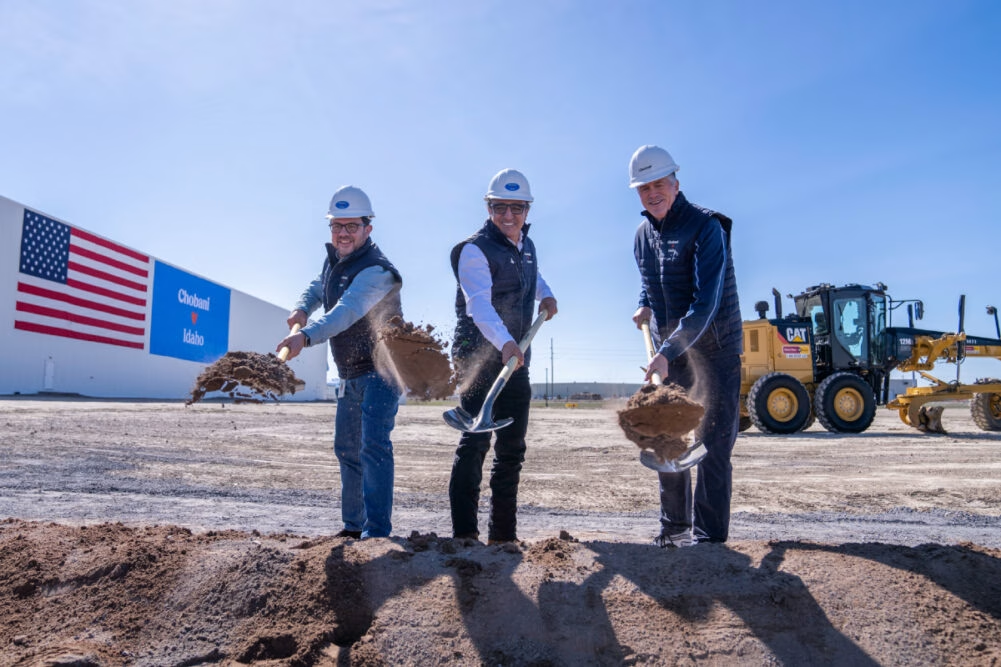

 Join the Revolution!
Join the Revolution!


